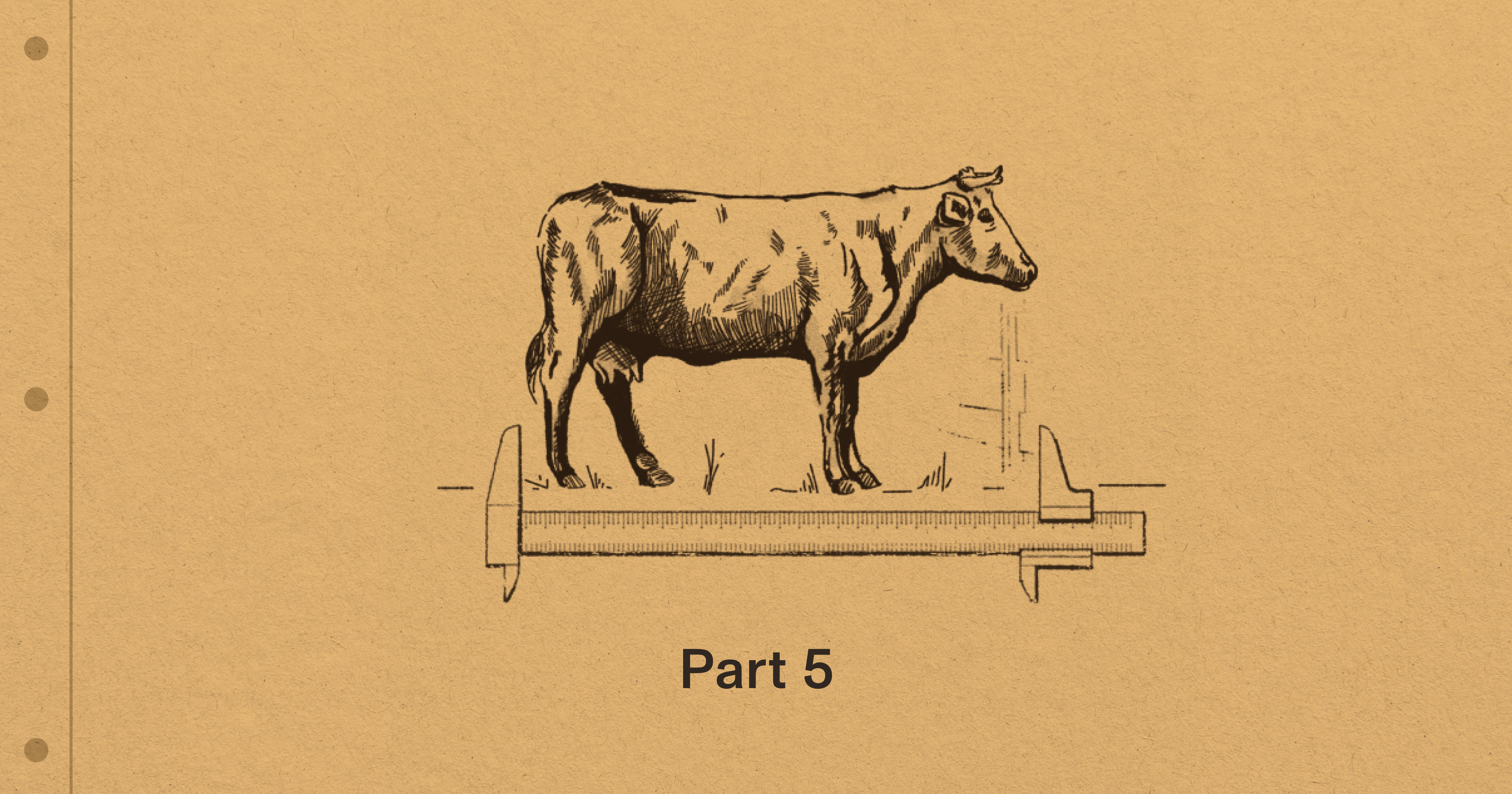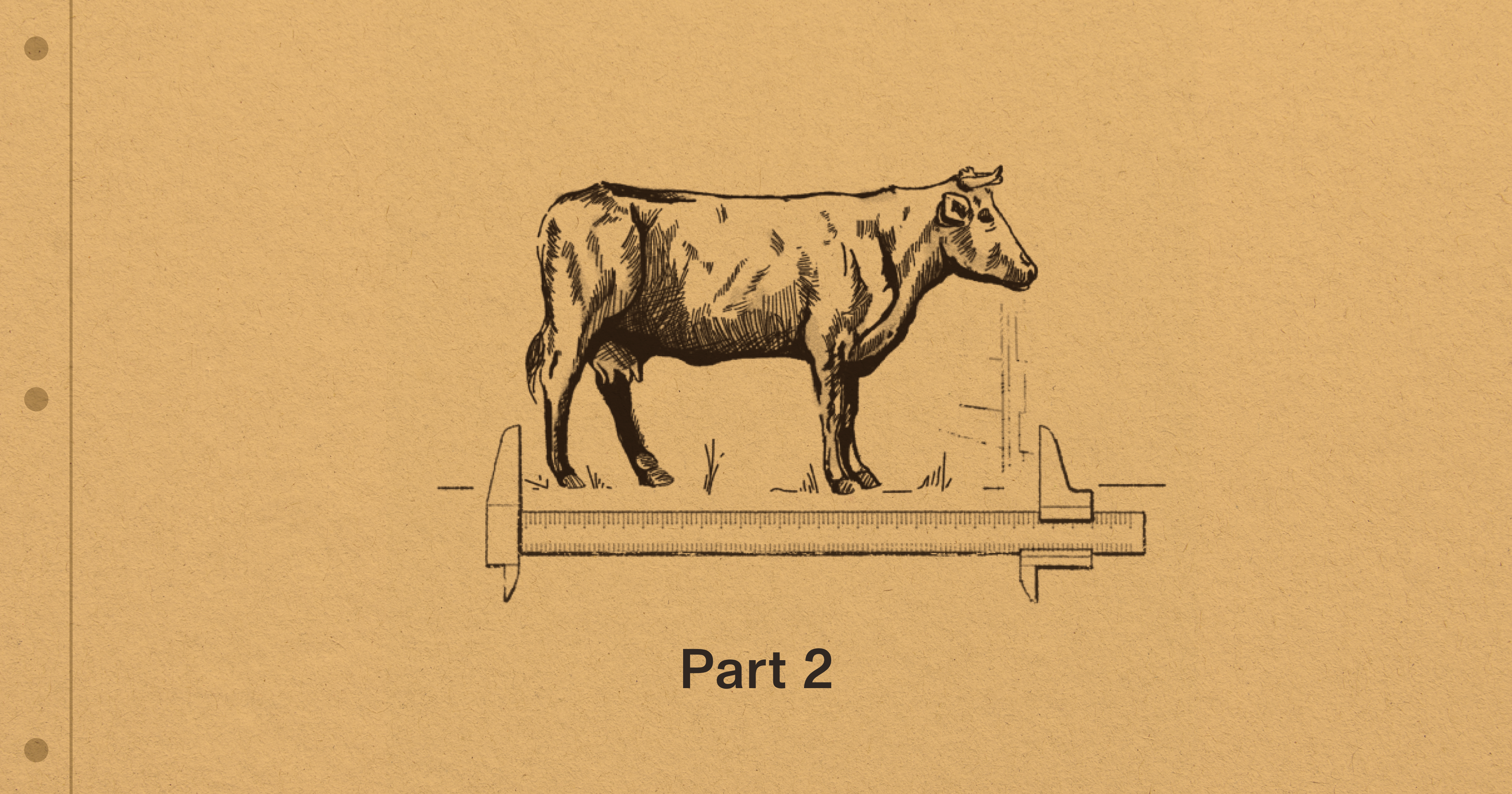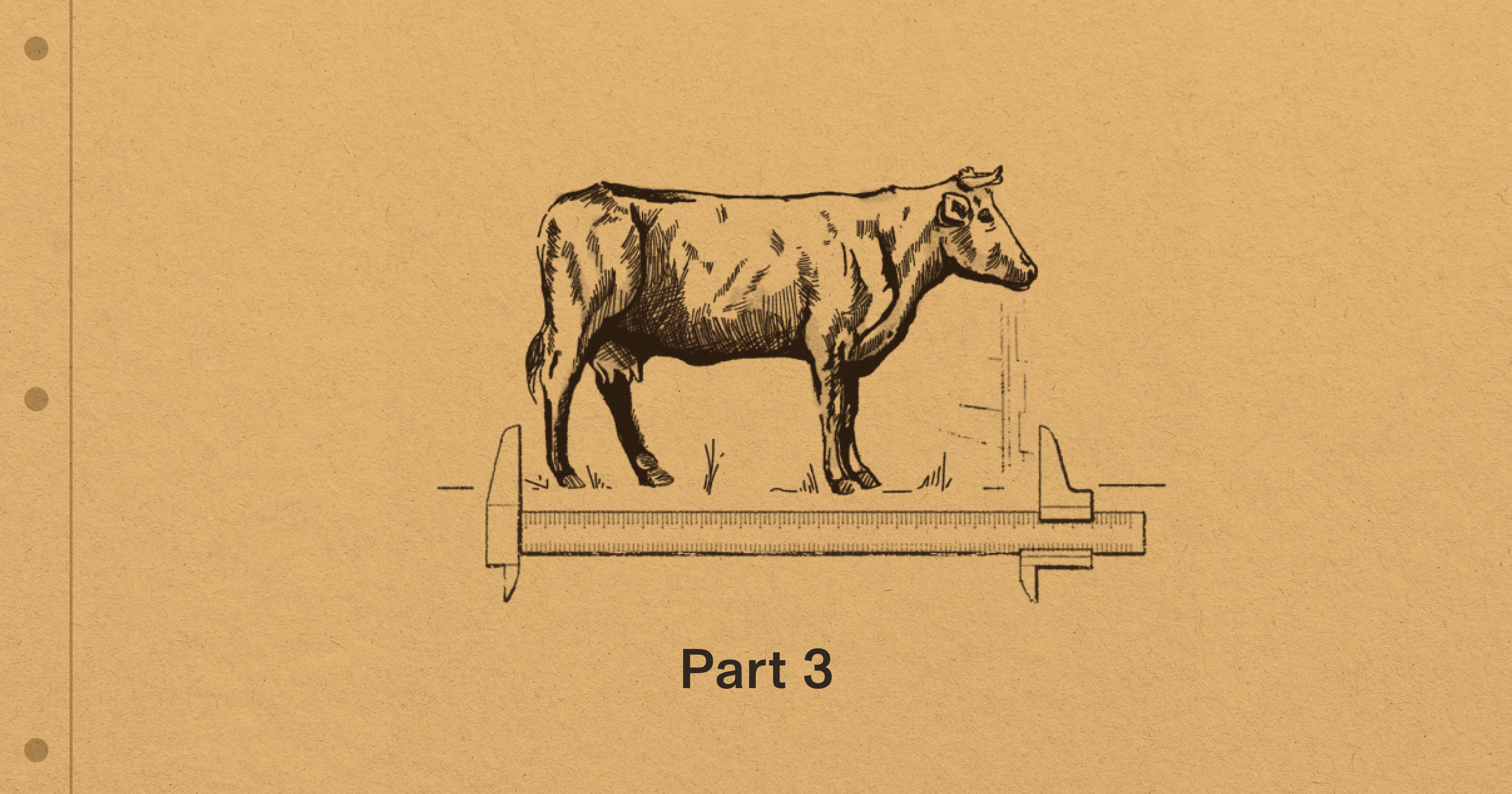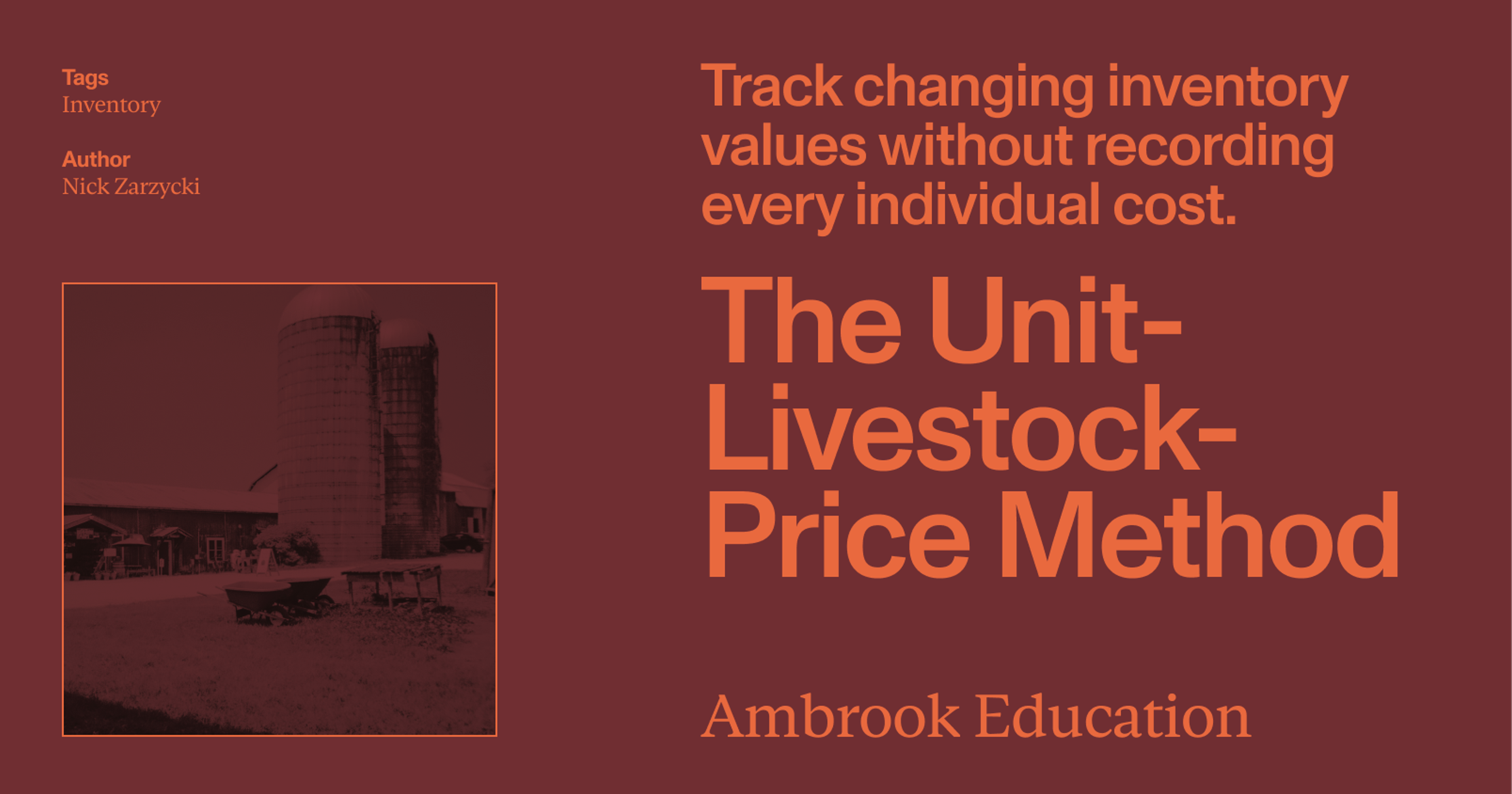Part Five of Managerial Accounting for Raising Livestock for Cow-calf, Dairies, and other Breeding Stock Operations
Getting the data required to create Managerial Financial Statements is the first step to unlocking a larger set of Key Performance Indicators (KPIs) – both financial and operational metrics that can be used to assess the performance and health of a business.
KPIs are useful both in the short-term, to understand if a ranch was profitable last year, as well as in the long-term, to help management see if a ranch is moving towards its operational goals. This guide aims to outline and discuss the following kinds of high-level metrics:
Production KPIs
Financial KPIs
Profitability Metrics
Included in our details will be benchmarks based on the analysis of a number of ranches and operations courtesy of Ranch KPI.
To conclude we will also highlight some other KPIs that require more detailed record keeping to calculate, but are both very achievable and very useful with the right tools.
Production KPIs
This group of KPIs covers operating metrics that can be calculated using a combination of your Stock Flow Workbook and other managerial data that should be available or tracked.
Market Value of Breeding Females
| Calculation | Total number of breeding females multiplied by the current market rate for Heifers and Cows |
|---|---|
| Goal | Understand the financial coverage the operation has in the event of unforeseen circumstances |
| Benchmark | N/A |
| Comment | The January 1 number, or the timing right before an operations breeding season, is the most important time for this figure to be calculated. |
Pregnancy Percentage
| Calculation | Number of pregnant females divided by the number of females checked for pregnancy |
|---|---|
| Goal | Measure the productivity of an operations fixed assets dedicated to breeding |
| Benchmark | Greater than 90% |
| Comment | Arguably the most important metric for a cow-calf operation. |
Calving Percentage
| Calculation | Number of calves born divided by number of females intended to be bred |
|---|---|
| Goal | Proactively identify issues of productivity loss |
| Benchmark | Greater than 85.0% |
Weaning Percentage
| Calculation | Number of weaned calves divided by females intended to be bred |
|---|---|
| Goal | Proactively identify issues of productivity loss |
| Benchmark | Greater than 83.0% |
Average Weaning Weight
| Calculation | Total pay-weight of calves divided by number of calves weaned |
|---|---|
| Goal | Measure productivity of breeding assets in terms of sellable weight |
| Benchmark | Greater than 550 LBs |
Pounds Weaned per Exposed Female
| Calculation | Total pay-weight of calves divided by exposed females |
|---|---|
| Goal | Measure productivity of breeding assets in terms of sellable weight |
| Benchmark | Greater than 460 LBs |
Acres per Exposed Female
| Calculation | Total grazable acres divided by total exposed females |
|---|---|
| Goal | Calculate the effective stocking rate of an operation |
| Benchmark | N/A |
| Comment | Stocking rate is a very important metric for an operator to decide upon at the beginning of a given production season, so measuring it against annual performance is equally important. |
Financial KPIs
Gross Revenue per Female
| Calculation | Total Revenue from Weaned Calf Sales + Change in Value from Death / Sales in Breeding Stock + Gain (Loss) from Qty. Change in Replacement Heifers |
|---|---|
| Benchmark | Greater than $1,150 per female |
| Comment | Revenue for this KPI needs to include both cash received, costs related to deaths and sales, and non-cash internal sales via transfers between categories to produce a holistic number. |
Breakeven Price per Weaned Calf LB
| Calculation | Total Expenses (including change in value from death, sales, and quantity of inventory) ÷ Total LBs of Weaned Calves |
|---|---|
| Comment | This number will fluctuate as other KPIs change but is important for knowing the selling price a cow-calf operation needs to breakeven per head. It is effectively the metric different operations compete on. |
Profitability Metrics
These are not KPIs per se, but metrics that an operation can track to measure and communicate overall profitability both internally and externally. Some of these metrics require using market basis valuations on your assets, which we do not recommend for pure accounting purposes but be useful in communicating the current financial value of an operations assets.
Rate of Return on Assets (Cost Basis)
| Calculation | Net Operating Income (incl. Interest payments) ÷ Average Total Assets |
|---|---|
| Benchmark | Greater than 5.0% |
| Comment | This is a metric that can be compared against other industries or investment opportunities. 5% is a hurdle rate that can be beaten in many assets, such as bonds. |
Total Investment per Breeding Female (Market Basis)
| Calculation | Total Assets (market basis) ÷ Market value of breeding females |
|---|---|
| Benchmark | Between $5,000 and $25,000 per breeding female |
| Comment | This number contextualizes how hard it is for an operation to pay for its total assets (land is normally the largest factor). It could effectively be thought of as the breakeven cost needed per breeding female, the main productive asset. |
Equity to asset ratio
| Calculation | Total Owner Equity ÷ Total Assets |
|---|---|
| Benchmark | Greater than 50.0% |
| Comment | This metric represents the percent of an operation owned outright by the operator. Many lenders do not want to be in a situation where they have more ownership than the operator. |
Advanced KPIs and Metrics
In this guide we have established a framework and protocol to account for livestock assets and operations using the Base Value methodology. Using the Base Value method allows you to reliably calculate all the KPIs outlined in this guide. Comparing those metrics year over year is the best way to assess the performance and efficiency of your operation and to figure out where there is room for improvement.
Ultimately, there is a tradeoff between time spent bookkeeping and precision – for many operations, the Base Value method provides an adequate level of precision. The relative ease-of-entry of the Base Value method (compared to Full-Cost Absorption) makes the KPI and metric calculations discussed in this section achievable to operators of almost any financial sophistication. The base values selected are an approximation of the values the Full-Cost Absorption method would produce in terms of costs to raise an animal to a particular stage.
That said, if you have the inclination, using the Full-Cost Absorption Method can produce more accurate metrics as well as make it easier for you to effectively compare the cost basis of different production years within the same animal group – e.g. did I spend more per head to raise my 2023 Replacement Heifers compared to my 2024 Replacement Heifers? For larger operations, particularly those whose herd size fluctuates significantly, these numbers can and do vary more from production year to production year, so implementing the Full-Cost Absorption method becomes worth the additional effort.
For more information about how to implement these practices – either the Base Value or Full-Cost Absorption methods – for your own operation, reach out to the Ambrook team for a conversation. If you’d like to learn more about the accounting methods and metrics presented here, some of our top recommend resources include:






